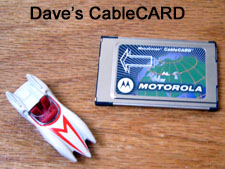Yesterday, we took a look back at 2006 and concluded high definition reaching a critical mass was the story of the year. For 2007, instead of forecasting the obvious (everyone gets HDTV – for less, digital media is everywhere) or making a bunch of wild predictions (Comcast buys TiVo), Dave and I wanted to focus on two notable dates.
Seven-Oh-Seven
 If you’re not in the business of broadband or consumer electronics, you’re probably not focused on the upcoming July 1st (7/07) CableCARD deadline. The CableCARD issue is sort of a subtopic in the larger story around the analog-to-digital TV transition. Nonetheless, the de-coupling of embedded security from set-top boxes has its own interesting history, and is worth a quick rundown:
If you’re not in the business of broadband or consumer electronics, you’re probably not focused on the upcoming July 1st (7/07) CableCARD deadline. The CableCARD issue is sort of a subtopic in the larger story around the analog-to-digital TV transition. Nonetheless, the de-coupling of embedded security from set-top boxes has its own interesting history, and is worth a quick rundown:
Cable Companies and CableCARD – Once Upon a Time
The difficult thing about making set-tops has traditionally been the embedded security features, called Conditional Access (CA). Two companies – Motorola and Scientific Atlanta – cornered the market on CA, and thus became the primary set-top manufacturers for cable operators large and small. The operators decided they wanted more vendor choices and so supported the idea of separating CA from set-top hardware. Separable security, i.e. the CableCARD was born.